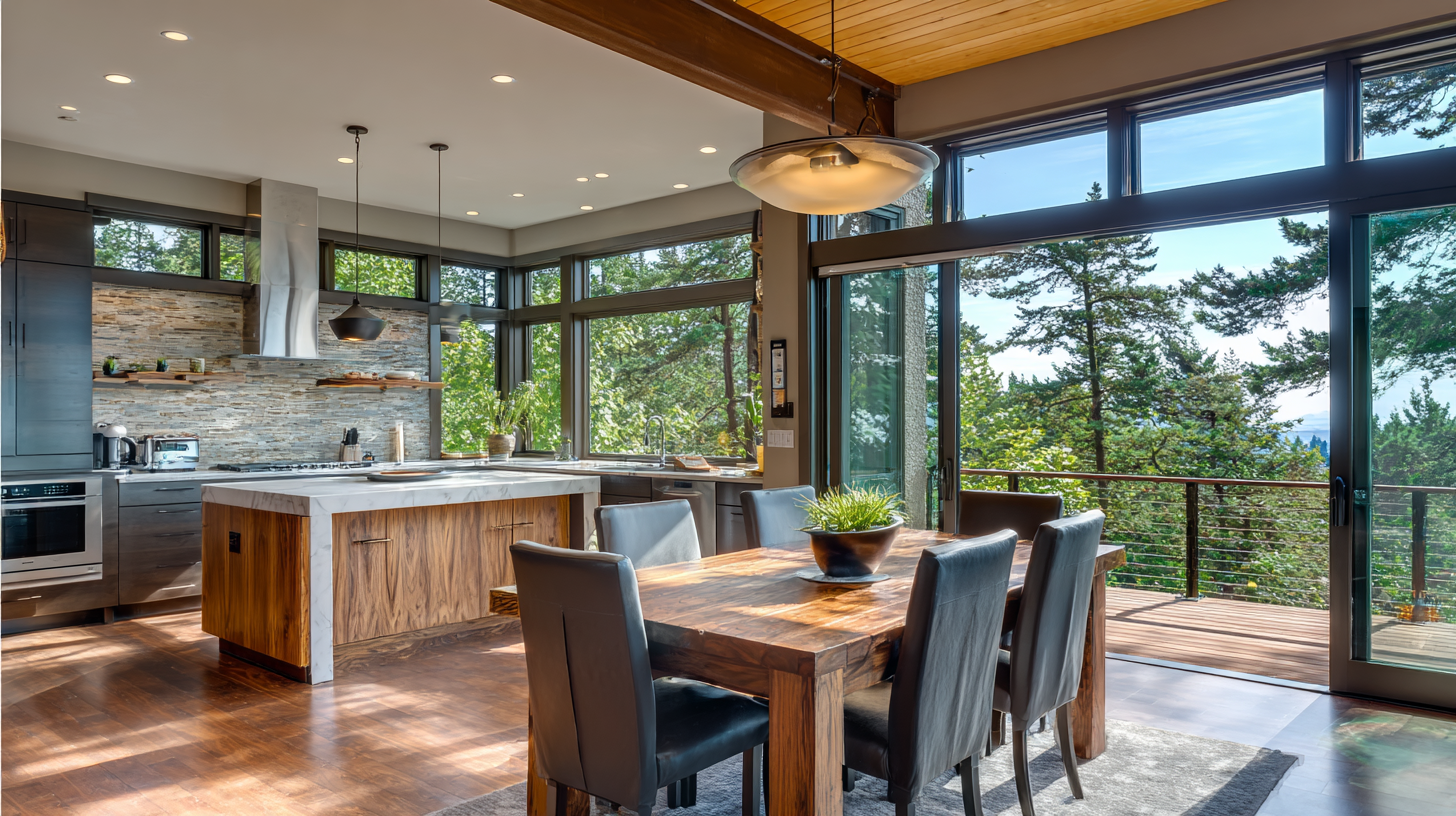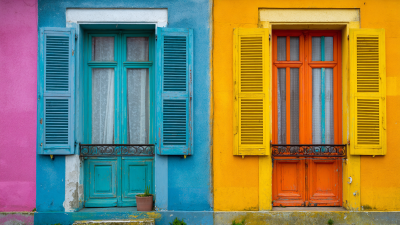Exploring the Benefits of Energy Efficient Exterior Windows for Modern Homes
In recent years, the significance of energy-efficient exterior windows has become increasingly apparent as homeowners seek to reduce energy costs and enhance indoor comfort. According to the U.S. Department of Energy, windows account for 25%-30% of residential heating and cooling energy use, making the selection of high-performance exterior windows an essential consideration in modern home design. Energy-efficient windows can significantly lower energy consumption, with studies indicating potential savings of up to 20% on heating and cooling bills when replacing conventional windows with ENERGY STAR-certified options. As these exterior windows contribute to better insulation and reduced reliance on HVAC systems, the growing trend towards sustainable living and green building practices further underscores their importance in contemporary architecture. With a variety of styles and technologies available, investing in energy-efficient exterior windows not only enhances a home's aesthetic appeal but also represents a crucial step towards reducing one’s environmental footprint.

Understanding Energy Efficiency Ratings for Exterior Windows
When considering energy-efficient exterior windows for modern homes, understanding energy efficiency ratings is crucial. These ratings provide insight into how well a window can perform in terms of insulation, heat transfer, and overall energy usage. A higher rating often signifies better performance, which translates to lower utility bills and enhanced comfort within the home. Homeowners are increasingly aware that investing in windows with superior energy efficiency can significantly improve their living conditions by reducing drafts, minimizing noise pollution, and maximizing natural light.

Recent innovations in window design and materials are expanding the options available to consumers. As companies continue to enhance their product offerings, features such as new finishes and styles are becoming commonplace, making it easier for homeowners to find energy-efficient windows that complement their exterior aesthetics. Furthermore, financial incentives, such as tax credits for energy-efficient home improvements, are encouraging more homeowners to make the switch. As these credits remain available for a limited time, now is an opportune moment to explore energy-efficient upgrades, which not only enhance home value but also contribute to long-term savings.
Choosing the Right Materials for Energy Efficient Window Installation
When selecting materials for energy efficient window installation, homeowners should consider the benefits of different options available. Vinyl and fiberglass frames are increasingly popular due to their excellent insulation properties and durability. These materials are not only good at reducing heat transfer but also require minimal maintenance, making them a smart investment for modern homes.
**Tips:** When choosing window frames, look for those with a high R-value, which measures thermal resistance. Additionally, consider the durability of the materials; options like fiberglass can withstand extreme weather conditions better than wood or aluminum.
Another critical factor is the type of glass used in energy efficient windows. Double or triple-pane glass filled with argon or krypton gas offers superior insulation and reduces energy costs significantly. Low-E (low emissivity) coatings can also enhance energy efficiency by reflecting heat back into the room, helping to maintain a comfortable temperature year-round.
**Tips:** Always check for ENERGY STAR certification on windows, which ensures they meet strict energy efficiency guidelines. Additionally, investing in high-performance glazing can further enhance the energy performance of your windows.
Installation Tips for Maximizing Thermal Performance of Windows
When considering the installation of energy-efficient exterior windows in modern homes, maximizing their thermal performance is crucial. Quality installation can significantly enhance the insulation properties of windows, leading to reduced energy bills and increased comfort throughout the year. One essential tip is to ensure that windows are installed with proper sealing and insulation to minimize air leaks. Using high-quality caulking and weather stripping not only prevents drafts but also boosts the overall efficacy of the windows.
In addition, selecting the right window types and materials plays a vital role in their thermal performance. Double or triple-glazed windows, for instance, offer superior insulation compared to single-pane options. Homeowners should also consider low-emissivity (Low-E) coatings, which reflect heat while keeping light in. Properly orienting windows to take advantage of natural light can further enhance energy efficiency by reducing reliance on artificial lighting during the day. By focusing on these installation strategies, homeowners can fully capitalize on the benefits of energy-efficient windows, ensuring that they maximize their potential in reducing energy consumption and enhancing home comfort.
Maintaining Your Energy Efficient Windows for Longevity
Maintaining energy-efficient windows is crucial for ensuring their longevity and preserving the benefits they offer. Over time, exposure to various weather conditions can lead to wear and tear, potentially diminishing the performance of these windows. Regular cleaning is essential; dirt and debris can interfere with the operation of moving parts and promote deterioration. Additionally, inspecting the seals and frame for any signs of damage can prevent air and moisture infiltration, which compromises energy efficiency.

Evaluating the Cost-Benefit Analysis of Energy Efficient Exterior Windows
When evaluating the cost-benefit analysis of energy-efficient exterior windows, it becomes evident that these upgrades can significantly reduce a home's energy consumption. Research indicates that replacing standard windows with energy-efficient models can lower heating and cooling costs by up to 25%, depending on the region and existing window conditions. The initial investment may vary, with reports suggesting that homeowners can expect to pay approximately $500 to $1,500 per window, yet the long-term savings often offset these costs within a mere few years.
Moreover, homeowners can take advantage of substantial tax credits for installing energy-efficient windows. Current incentives allow for a tax deduction based on the cost of new installations, which can encourage even more homeowners to make this beneficial upgrade. A study highlights that investing in energy-efficient technologies, including windows, not only contributes to reduced utility bills but also enhances property value by improving a home's overall energy rating. With energy costs on the rise, making informed decisions about window replacements can lead to significant savings and a more sustainable living environment.
Exploring the Benefits of Energy Efficient Exterior Windows for Modern Homes
| Features | Energy Efficient Windows | Standard Windows |
|---|---|---|
| Initial Cost (per unit) | $500 | $300 |
| Annual Energy Savings | $150 | $50 |
| Average Lifespan (years) | 30 | 15 |
| Recyclable Materials | Yes | No |
| UV Protection | 95% | 75% |
| Payback Period (years) | 3.33 | 6.00 |
Related Posts
-

7 Essential Features to Look for in the Best Residential Windows
-

How to Choose the Perfect Exterior Windows for Your Home
-

5 Essential Tips for Choosing the Right Window Replacements for Your Home
-

How to Choose the Right Window Installers for Your Home Renovation Project
-

7 Ways Window Financing Can Transform Your Home Improvement Budget
-

How to Choose Retrofit Windows for Energy Efficiency and Cost Savings
